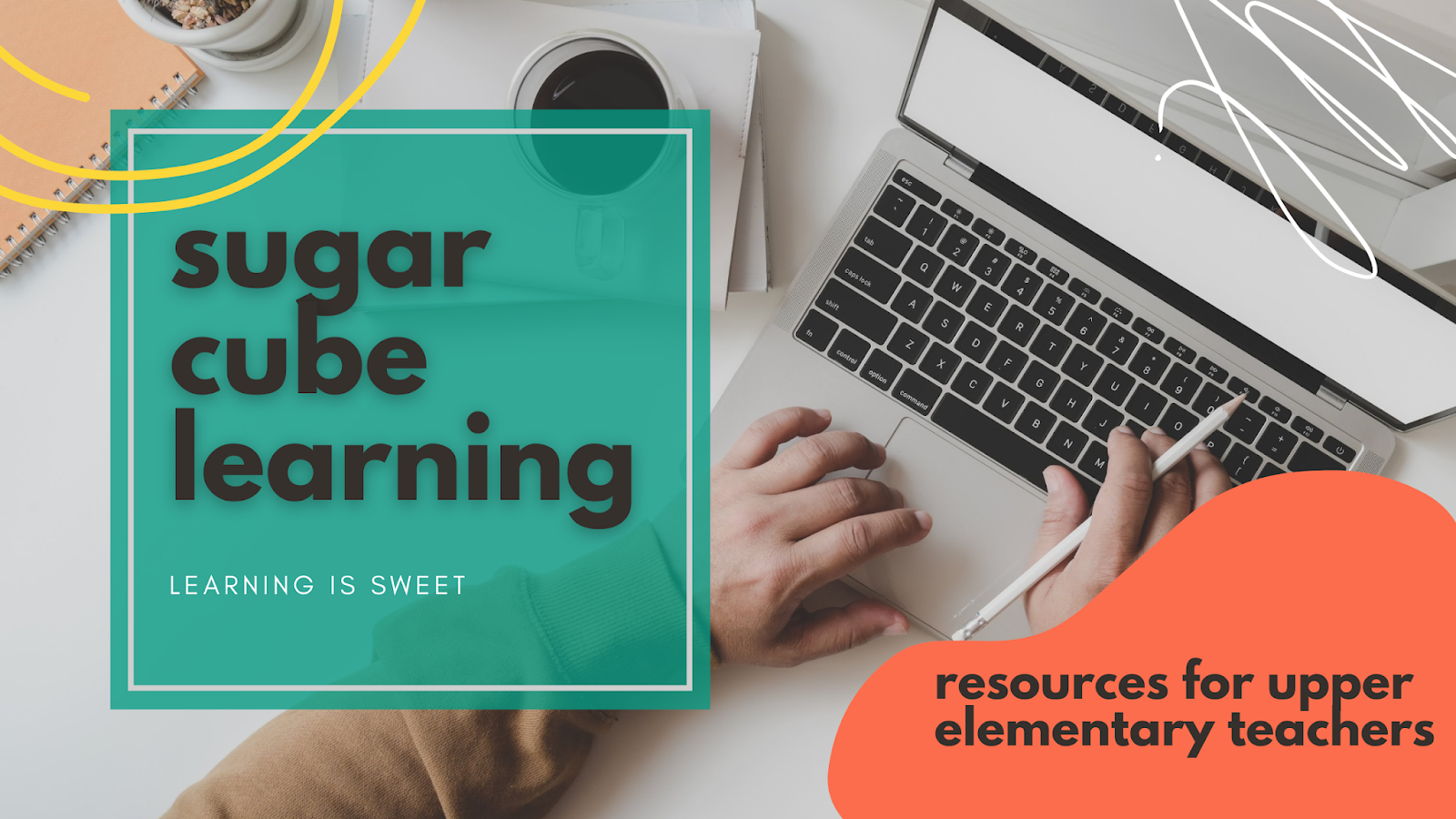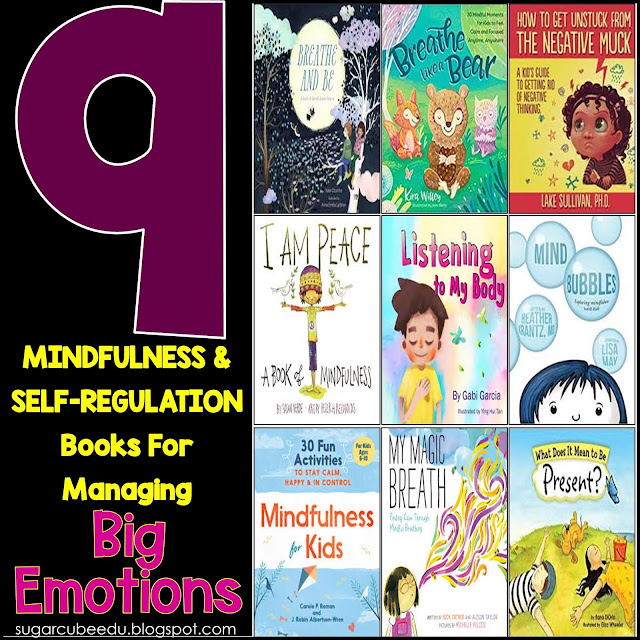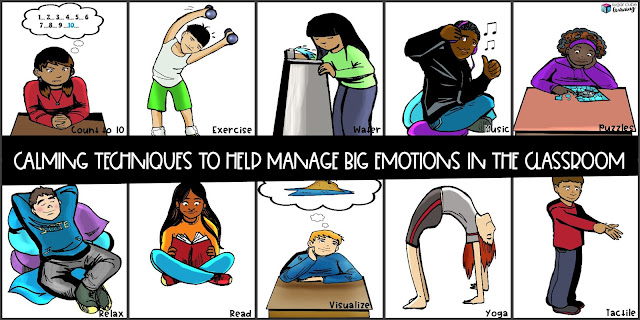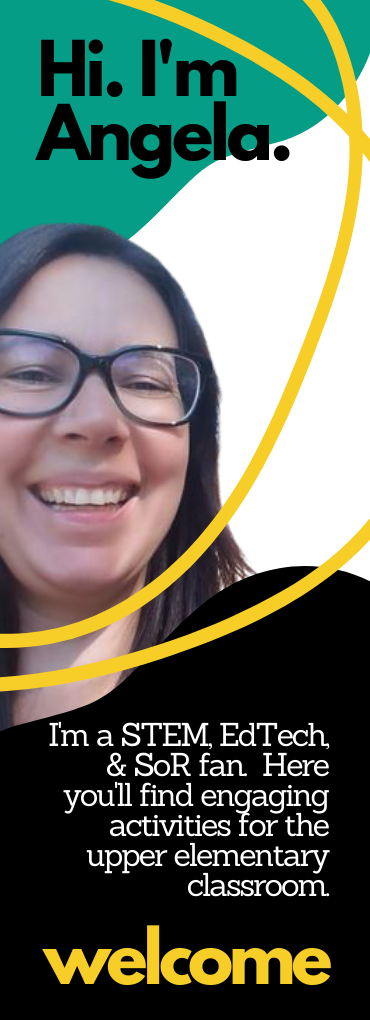Students walk into our classrooms every day bringing a ton of baggage; some good and some bad. Arguing parents, lack of sleep, lost a soccer match, not enough to eat, fight with a friend, big test coming up... While some students are able to self-regulate successfully, others may be at a breaking point when asked to complete everyday school tasks. Without any wrong doing on the teacher's part, perhaps today is the day one of your students can't take it anymore and decides to erupt. Do your students know how to diffuse BIG emotions in a healthy way so as to not disrupt the learning of those around them?
Allowing opportunities for social emotional learning in the classroom, you can model how to handle extreme feelings, difficulties, and relationships in beneficial ways. Practicing mindfulness and self-regulation skills can help. Mindfulness is the art of focusing on the present; not dwelling on past experiences, and not wondering what (good or bad) is going to happen in the future. Activities such as meditation, yoga, and guided imagery can help foster a sense of calm and focus. Being able to self-regulate one's feelings such as completing quiet exercises in the corner of the classroom instead of turning over desks and screaming, will not only make your classroom culture more inviting, but also make your students more calm, organized, and successful.
The following are several read alouds that may be helpful when introducing mindfulness and self-coping techniques to your students. Note: This post may contain Amazon affiliate links which help support and maintain this website at no cost to you.
Breathe and Be uses poetry to help your students observe the natural world around them in order to help them feel more calm.
Breathe Like a Bear is a beatifully illustrated book of mindfulness exercises designed to teach kids techniques for managing their bodies, breath, and emotions.
How To Get Unstuck From the Negative Muck uses cartoons and journal exercises to encourage students to overcome negative thoughts that affect one's mood and behavior.
I Am Peace will help your kids find peace and calm through mindful exercises. It will develop a better awareness and expression of their emotions.
Listening To My Body is a great conversation starter about how to listen to one's body as they relate to emotions and feelings. There are several mindfulness activities to help students improve their emotional resilience.
Mind Bubbles will encourage your students to focus on and deal with the emotional bubbles that pop into their heads when they're feeling big emotions in mindful ways.
Mindfulness For Kids provides 30 mindful exercises set to real-life scenarios that your students will encounter everyday and how to overcome the stressful situations more gracefully.
My Magic Breath uses breathing exercises to help facilitate a sense of calm when emotions, anxiety, and stress become overwhelming.
What Does It Mean To Be Present? will allow your students to role play several examples of what being present sounds, feels, and looks like at school, home, and in public.
Here's a simple activity to get you started with your mindfulness lesson plans. "Cool Down Cocoa" will take your students through breathing and guided imagery tasks to help them calm down. Ideas for making this activity sensory/tactile are included. Grab it FREE by clicking the picture above or HERE.
Feeling like you’re ready to implement more mindfulness and calming activities, but not sure where to begin? I have introductory mindfulness printables, a self-regulation/calming journal, and easy bulletin board ideas available HERE.
Thanks for stopping by! It is my hope that you've found some reading suggestions and ideas to get you started implementing mindfulness in your classroom. Social emotional skills are vital for students to be successful students. When they are able to self-regulate and overcome worries, stressors, and negative thoughts; and they feel safe, welcome, and calm in your classroom, learning will flourish. Happy teaching!







